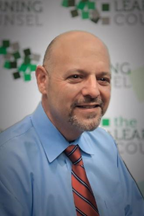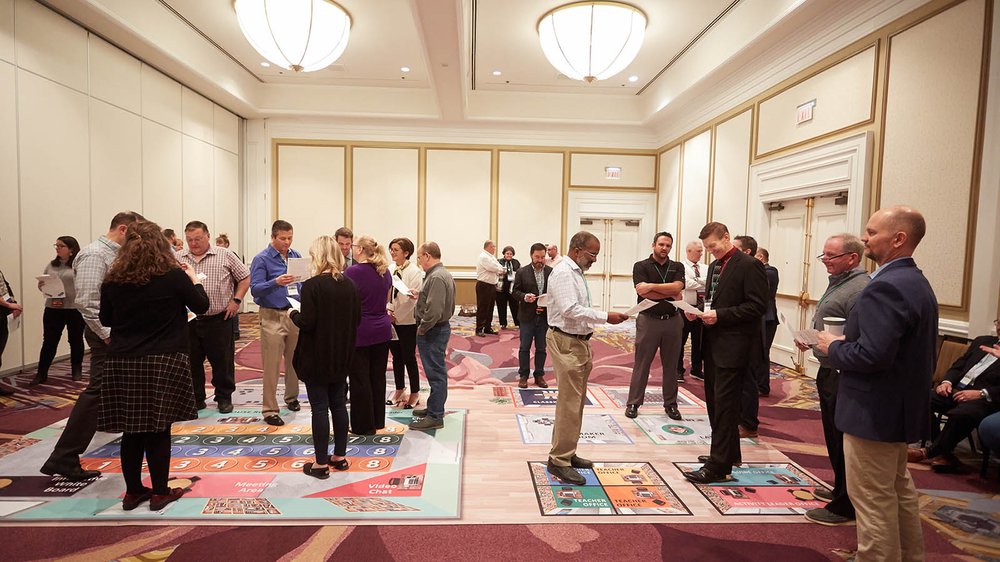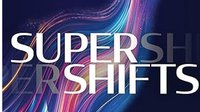If you ask a dozen educators to define personalized learning, you’ll no doubt get some enthusiastic answers, and all twelve will probably be different. As our paradigms change with tech and culture, and pressures mount to increase achievement and stop attrition of student to alternatives, so do the views of what personalized learning actually is.
The old-school answer to the definition of personalized learning is well-defined and will likely revolve around personalizing resources and texts to help students reach a goal defined by a teacher or the district. Even though students may use different resources to get there, they all wind up at the same place – with the goal being for every student to consume and retain a defined set of facts.
The new-school answer to the definition of personalized learning is markedly different. Its biggest divergence has to do with physical structure of where learners and teachers are spending the most time, and the disaggregation of the classroom and modification of the grade groupings. The new paradigm allows for students to be placed at appropriate points for them on the predetermined highways of learning, with customization byways as needed. This breaks up the traditional age/grade groupings to make way for dynamic groupings based on individual progress. Some people have called parts of this “competency-based learning,” but ideally schools can achieve this shift without altering outcomes in such a holistic way. They can lay their existing lesson plans end-to-end like bricks and already have the basics of personalized workflow learning. Lectures are now scheduled events or meet-ups. Teachers can afford the attention needed for catching some students up.
Twenty years ago, this may have been thought of as crazy, perhaps leading to anarchy. But today, this is what personalized learning is becoming because current technologies allow learning to be “consumerized” and for schedules of traditional lecture, whole group, small group, labs and pairings to be “uberized.” This insight into the full capacities of tech makes so much more sense for leveraging the humanity and specialties of teachers that it could be the ideal way to save and properly exalt the teaching profession.
The basic thing that makes new-school personalized learning possible is the creation and execution of a new model of workflow. The term workflow, in this age of digital transformation in education, involves the transportation of information like learning resources associated with certain processes, triggered by rules, to accomplish a goal. Examples of workflow automation in education can be illustrated by connecting disparate systems with learning objects and information routing for task completion. Teachers are still involved, but in more precise ways that free them from other onerous constraints and using more analytics. Another reality of how workflow changes the dynamics is independent sequencing for personalized learning, grading and compliance approvals; the simplicity of the practice uses structured documents known as check sheets, course sheets, worksheets and routing forms, some of which may depend on manual or automated answer keys and automatic calendaring.
Public and private small schools have used sequenced workbooks for decades, mostly paper-based, because they had small populations of disparate ages and perhaps enough money for only one teacher.
Moving this to scale necessitates the use of algorithmic inference engines, auto-notifications, auto-calendaring, auto-cohorting based on pace and achievement, and more. Like everything else in education, the devil is in the details.
Look at it this way. Workflow is the process of providing what a learner needs when he (or she) needs it. This just in time model works already in distance learning for some aspects, and has been especially refined in higher ed. The good news is that technology can now do all the heavy lifting. As teachers and learners follow their paths, the resources they need – be it a teacher’s whole group lecture, a small group parlay, an instructional video or a computer lab – will magically appear when needed, the same as the efficiencies wrought by Amazon, Uber and how social media or the Internet serves up things of known interest. The technology behind it is pretty basic stuff, with the mechanizations already in use in other industries like airline scheduling (auto-cohorting people onto planes to reach destinations, un-cohorting in hub airports, then re-cohorting for a final destination), and uber which matches riders with drivers auto-magically and can be used for both matching small groups up with live lectures as well as students with needed direct instruction.
The problem for most people is visualizing it in the first place. If your mind’s eye can conceive it, your district can achieve it. That was the challenge before the Learning Counsel as they prepared for their annual “Gathering,” a once-a-year retreat style event that typically attracts our nation’s brightest and best superintendents, curriculum and technology directors for two intensive days of information and strategy designed for school and district honchos around education’s digital transition.
This year, Learning Counsel news media publisher and well-known author LeiLani Cauthen had an idea to address the problem and show the possibilities. If you are acquainted with Cauthen, her ideas tend to be absolutely brilliant as well as a tad out of the box.
The idea was a human board game, a cross between a game similar to “Twister” with a working model of workflow in a school that uses a giant “House” room (think Harry Potter’s magical world with a sorting hat for which House students join based on interests); adjacent rock-climbing wall, ping-pong and yoga space to get kids moving if they reach a time limit on screen-learning; a snack area, teacher offices, separate classrooms, labs, meeting spaces for interactive whiteboarding or video collaboration, a space for an activity leader/advance stager of resources for labs and an on-site curriculum planner called a Guide who watches the analytics and pace just like teachers and helps them with further customizations.
Cauthen’s game illustrates how a modern, fully functioning version of workflow for “just in time” personalized learning could be achieved. Cauthen’s vision, made real by leading design expert Dolly Johnson, was a huge success. Attending superintendents and other top-tier education officials stepped onto the 10 x 24-foot game board and played different roles required to achieve real personalized learning. One Assistant Superintendent assumed the role of a student who “got in trouble” during the game for leaving a robotics lab messy and had to do dusting chores before continuing on his twister-plot of math goals up to “level 8,” another school leader got to lead a small group poetry exercise as the language teacher. For the first time, these superintendents and others were able to visualize the process, to see a new model of education workflow from the inside. Aside from a couple of “right foot blue, left hand red” moments, the board game helped people live the reality of a different structure to learning, enabled by advanced technologies. The result was a group of district leaders who couldn’t wait to get home and create the workflow necessary to install true personalized learning in their own school systems. Steps to achieving this are already in recent Special Reports by the Learning Counsel. Some districts reported planning pilots in one or more subjects.

The Game Rules
Each role in the game has this introduction:
“Today’s systems, digital curriculum combined with workflow can personalize learning at scale to transform the entire learning experience. Through personalized workflow learning all students get exactly what they need. Schools can use document workflow like this game demonstrates in a semi-manual way on top of digital curriculum systems and automated courseware. Automating workflow would add a couple of simple business process algorithms, not true artificial intelligence (A.I.) or “machine learning” science, at least not yet, because it would still rely on a lot of human teacher and curriculum guide humans.
The main thing to observe is that automated workflow would add these capacities:
• Decision Trees. If a student is on an individual main path that all students take for a subject like Math, they would progress linearly unless they fail somewhere along the way. In this case, workflow should automatically intersect them with the teacher or guide who might give them a temporary separate workflow or direct instruction. At the end of each planned course or lesson workflow the decision to proceed to the next course or set of lessons would be manual unless automated to route an approval request to a teacher. In addition, courses can require self-study and traditional classroom whole group or small group activities for all students in certain progress cohorts by subject, by age, or all students.
• Auto-Cohorting. An algorithm known as kNN (k- Nearest Neighbors) would accumulate advancement of individual students to automatically create small groups for needed lectures on the paths, labs, and other activities. This could be done manually by daily monitoring progress in student workflow.
• Auto-Alerts and Auto-Calendaring. Simple triggers based on the progress of students would auto message and set calendar times for lectures and small group activities.
• If workflow is set up with sequences of checksheets in subjects that break down into coursesheets indicating the sequences of study and when lectures, small group and other activities are required, all of these simple algorithms can still be human decision points.
This game demonstrates a schedule microcosm with 14 to 20 people representing students, teachers, other faculty and a Game Leader to call out “Turn” every 30 seconds so that every player moves to the next item. Pay attention to your role, and the motion of all other players to see what happens when schools create change structure to drive achievement with true personalized learning. The game is set up with a main “House” or homeroom that might serves multiple grades for their screen learning time, with separate classrooms and other spaces used as needed. Schools could also use longer time blocks for subjects with traditional classrooms and achieve the same flexibility in personalized learning.
All players need to pretend to do the actions with motions like eating, reading, writing, playing, etc.”
You can imagine the fun that was had with Superintendents playing student roles, teachers playing House Leader roles, and gaggles of other educators hovering nearby to play the roles of “extras” coming in from other Houses for planned class activities and the like as if the whole thing was a movie sound stage, which it sort of was if you were watching it live in person. One administrator described it as “A rapid paced and fun game that was some of the best professional development showing the future, like ever.”
Cauthen’s team is currently figuring out the logistics of shipping the giant game board to every city for the Learning Counsel regional events in 2020. As more and more district leaders begin to understand how the future could be, and the concept behind this workflow engineered model for personalized learning, expect to see big changes for the nation’s learners. To secure the opportunity to see the game and play it for yourself, check the dates for next year’s regional events in your area and reserve your spot now.
You too could play the game, and your students will be one move closer to the education they will need for a to lead in the new economy.
About the Author

Charles Sosnik is an education journalist and editor and serves as Editor in Chief for the Learning Counsel. He uses his deep roots in the education community to add context to the education narrative. He is a frequent writer and columnist for some of the most influential media in education, including The Learning Counsel, NSBA Journal, edCircuit, EdNews Daily and EdTech Digest. Charles is unabashedly Southern and likes to say he is an editor by trade and Southern by the Grace of God.











